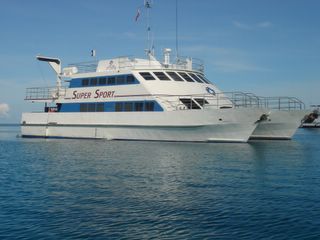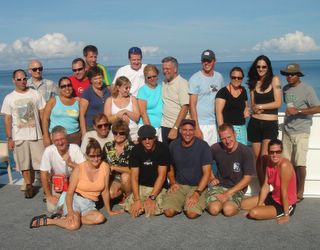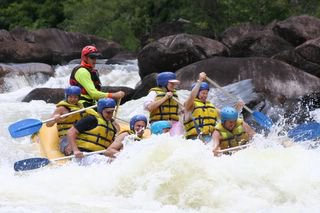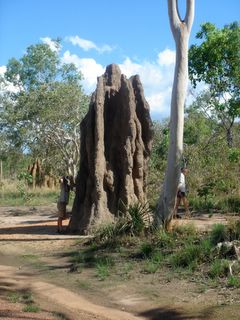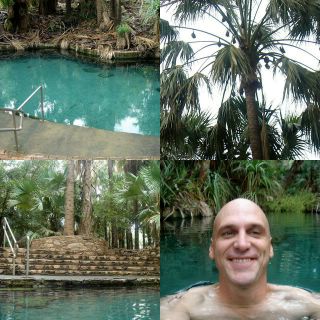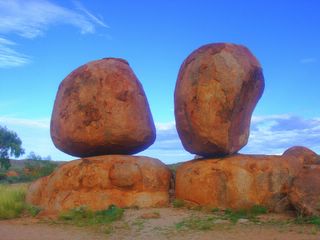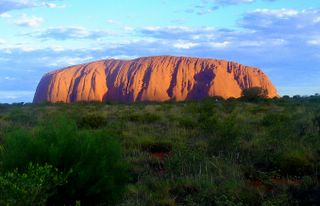
From Sydney we boarded a plane and flew to the center of Australia near Uluru. Nothing in Australia is as readily identifiable as Uluru (Ayers Rock), the world's biggest monolith. Australia's favorite postcard image is 3.6k long and rises a towering 348 meter from the surrounding sandy scrubland (867 meter above sea level). It's believed that two-thirds of the Rock lies beneath the sand. If your first sight of the Rock is during the afternoon it appears as an ochre-brown color, scored and pitted by dark shadows. As the sunsets, it illuminates the Rock in burnishing orange, then a series of deeper and darker reds before it fades into charcoal. This picture was taken at sunset.
The entire area around the Uluru- Kata Tjuta National Park is of deep cultural significance to the owners, the Aboriginal people. In the mid-1980 land the park was returned to the Aboriginal people, after being taken from them during the colonial period. The national park is leased to Environment Australia (the federal government's national parks body), who administer it in conjunction with the traditional owners.
